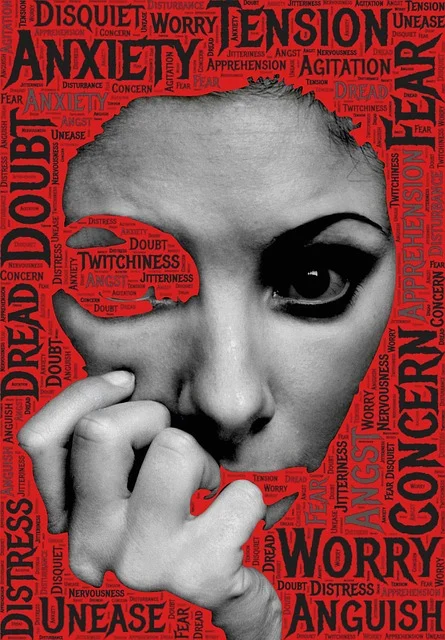Introduction
Functional freeze is a term that has recently gained attention in discussions about mental health, productivity, and trauma recovery. It refers to a state in which a person feels stuck and unable to take action, even on simple everyday tasks. Unlike procrastination or laziness, functional freeze is rooted in the body’s natural stress response—specifically the fight, flight, or freeze mechanism. When the brain perceives overwhelming stress, it may activate the freeze response, leaving individuals mentally and physically paralyzed.

This article provides a comprehensive exploration of functional freeze. We will define what it is, explain how it happens, review its causes, identify its symptoms, and discuss its effects on daily life. Finally, we will examine treatment approaches, including coping strategies, therapy, and medications, to help individuals regain control and move forward.
What is Functional Freeze?
Functional freeze is a psychological and physiological reaction in which a person becomes unable to function effectively due to stress or overwhelm. Instead of responding with action, the body and mind enter a state of paralysis. This may manifest as difficulty initiating tasks, avoidance of responsibilities, or feelings of mental fog and exhaustion.
For example, someone may recognize that they need to respond to an important email, but instead of typing a reply, they stare at the screen, unable to start. Others might feel incapable of getting out of bed even when they have commitments. The key distinction is that functional freeze is not a matter of willpower; it is an automatic nervous system reaction to perceived threat or overload.
How Does Functional Freeze Happen?
Functional freeze occurs as part of the body’s fight–flight–freeze response, an ancient survival mechanism. When confronted with a threat, the nervous system prepares the body to either fight the danger or run away from it. However, when neither seems possible or safe, the body may default to the freeze response.

In modern life, threats are often psychological rather than physical—work deadlines, financial stress, or emotional conflicts. The brain, however, reacts as though the threat is immediate and dangerous. This leads to physiological changes, such as slowed movement, dissociation, or mental shutdown. Instead of solving the problem, the individual becomes stuck, unable to act.
Everyday examples of functional freeze include:
- Staring at a pile of bills but feeling unable to open them.
- Avoiding phone calls or unread messages.
- Sitting at a desk with work to do but feeling mentally paralyzed.
- Ignoring chores or obligations even when they are urgent.
Signs and Symptoms of Functional Freeze
Functional freeze affects people differently, but common signs include:
Emotional Symptoms:
- Feeling numb or disconnected from emotions.
- Overwhelm or dread when faced with tasks.
- Frustration or guilt about not being able to act.
Cognitive Symptoms:
- Racing or looping thoughts without resolution.
- Difficulty concentrating or making decisions.
- Mental fog or blankness.
Physical Symptoms:
- Fatigue or heaviness in the body.
- Tension in muscles.
- Shallow breathing or stillness.
Behavioral Symptoms:
- Avoiding responsibilities or social interactions.
- Repeatedly delaying tasks.
- Withdrawing from activities once enjoyed.
Causes of Functional Freeze
Functional freeze can arise from a variety of underlying causes. Some of the most common include:
Stress and Burnout
Chronic stress at work, school, or home overwhelms the nervous system. Over time, this constant pressure can result in burnout, where the brain and body simply shut down.
Trauma and PTSD
Individuals who have experienced trauma may be more likely to enter the freeze response. The nervous system, conditioned by past experiences, may interpret ordinary stressors as threats, triggering shutdown.
Anxiety Disorders
Excessive worry can lead to paralysis. When the brain becomes overloaded with “what if” scenarios, the result is inaction.
Depression
Depression often brings fatigue, lack of motivation, and feelings of hopelessness—all of which overlap with functional freeze.
Neurodivergence (ADHD and Autism)
For those with ADHD, task initiation and executive dysfunction can resemble functional freeze. Autistic individuals may also experience shutdowns, especially when overwhelmed by sensory input or stress.
Perfectionism and Fear of Failure
Sometimes, the fear of making a mistake is so great that individuals avoid starting altogether, leading to functional freeze.
The Science Behind Functional Freeze
Functional freeze is deeply rooted in the nervous system. When stress is perceived, the amygdala (the brain’s fear center) signals the release of stress hormones such as cortisol and adrenaline. In fight or flight, these chemicals increase heart rate and prepare the body for action. In freeze mode, however, the parasympathetic nervous system takes over, slowing the body’s functions as a protective mechanism.
This shutdown response may have once been adaptive—helping humans “play dead” in the face of predators. In today’s world, though, it often leaves people feeling helpless in non-life-threatening situations, such as workplace stress or relationship conflict.
Effects of Functional Freeze on Daily Life
Functional freeze can interfere with nearly every area of life:
- Work and Productivity: Deadlines are missed, tasks pile up, and career progress may stall.
- Relationships: Avoiding conversations, phone calls, or social events can strain personal connections.
- Mental Health: Prolonged freeze states contribute to anxiety, depression, and low self-esteem.
- Physical Health: Chronic stress response leads to sleep problems, fatigue, and even cardiovascular issues.
This creates a vicious cycle: the more tasks are avoided, the more guilt and stress build, leading to deeper freeze states.
How to Break Out of Functional Freeze (Treatment and Coping Strategies)
Functional freeze is challenging but manageable with the right strategies.
Self-Help Techniques
- Grounding Exercises: Deep breathing, focusing on physical sensations, or naming objects in the room can bring awareness back to the present.
- Micro-Steps: Breaking tasks into the smallest possible steps (e.g., “open the email” instead of “respond to all emails”) reduces overwhelm.
- Body Movement: Walking, stretching, or light exercise activates the body and interrupts freeze.
- Journaling: Writing down thoughts helps externalize worries and clarify priorities.
- Self-Compassion: Reminding oneself that freeze is not laziness but a nervous system response reduces shame.
Therapy Options
- Cognitive Behavioral Therapy (CBT): Helps challenge negative thought loops and reframe them constructively.
- Somatic Therapy: Focuses on body-based interventions to release stored stress and trauma.
- Trauma-Informed Therapy: Addresses the root causes of freeze by working with past traumatic experiences.
Lifestyle Strategies
- Maintain consistent routines to provide structure.
- Prioritize sleep hygiene for brain and body recovery.
- Adopt balanced nutrition and hydration habits.
Medications for Functional Freeze
Medication may be useful when functional freeze is linked to underlying mental health conditions.
- Antidepressants (SSRIs, SNRIs): Useful when depression and anxiety contribute to freeze states.
- Anti-Anxiety Medications: Prescribed for individuals with severe anxiety that leads to paralysis.
- ADHD Medications: Stimulants or non-stimulants can improve focus and task initiation for those with ADHD-related freeze.
It is important that medications are prescribed and monitored by qualified professionals, as they should be part of a broader treatment plan that includes therapy and coping strategies.
Functional Freeze vs. Similar Conditions
Functional freeze can resemble other conditions but has key differences.
- Procrastination: Procrastination involves delaying tasks by choice, often replaced with other activities. Functional freeze, by contrast, feels like being unable to act at all.
- Depression: While depression includes lack of motivation, functional freeze is more about nervous system paralysis in the moment.
- Autistic Shutdowns: Similar in appearance, but rooted in sensory or cognitive overload unique to autism.
- ADHD Paralysis: Shares similarities, but is often linked to executive dysfunction rather than trauma or stress response.
Recovery and Long-Term Management
Breaking free from functional freeze requires both short-term coping and long-term resilience-building:
- Mindfulness and Meditation: Regular practice helps regulate the nervous system.
- Stress Management: Tools such as yoga, breathing exercises, or relaxation routines reduce the likelihood of entering freeze.
- Support Networks: Family, friends, and peer groups provide encouragement and accountability.
- Early Intervention: Recognizing triggers and addressing them before they escalate helps prevent chronic freeze states.
- Professional Care: Ongoing therapy can support deeper recovery and resilience.
Conclusion
Functional freeze is a powerful yet misunderstood response to stress. It is not laziness or lack of discipline but rather a nervous system reaction to overwhelming circumstances. By understanding what functional freeze is, why it happens, and how it affects life, individuals can begin to approach it with compassion and effective strategies.
Through a combination of self-help practices, therapy, and when necessary, medications, functional freeze can be managed and overcome. Awareness and proactive care allow individuals to reclaim agency, break free from feeling stuck, and move toward healthier, more balanced living.



